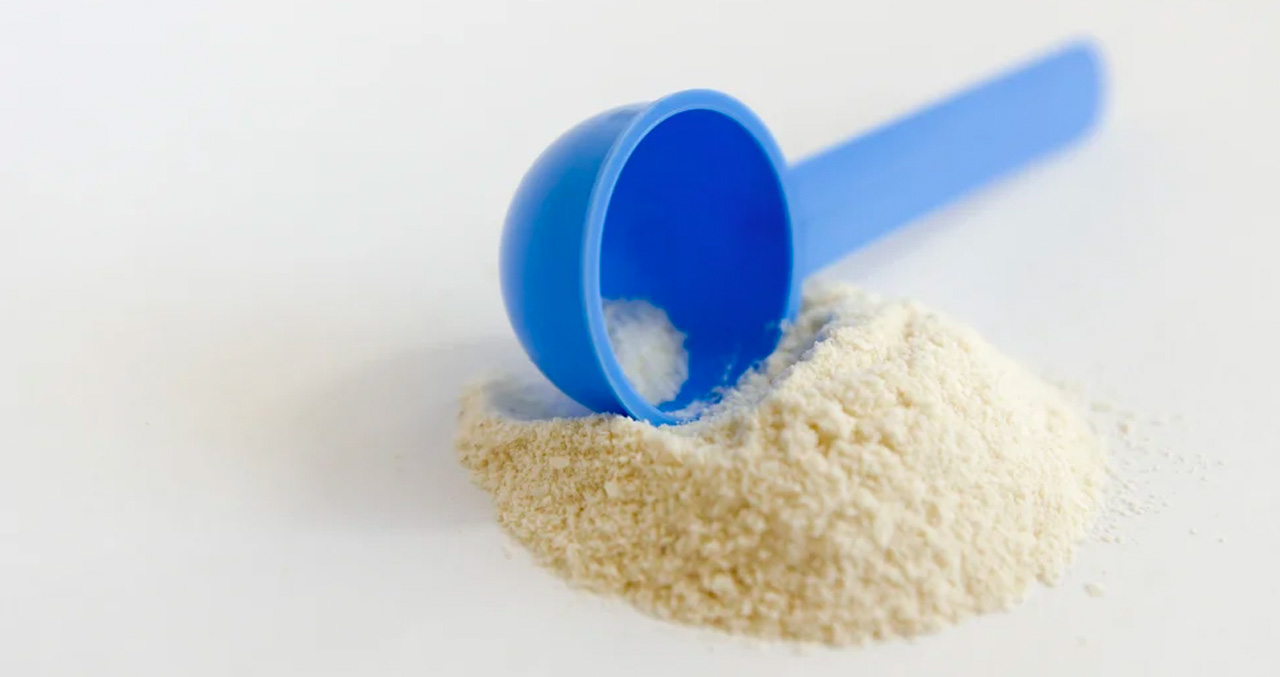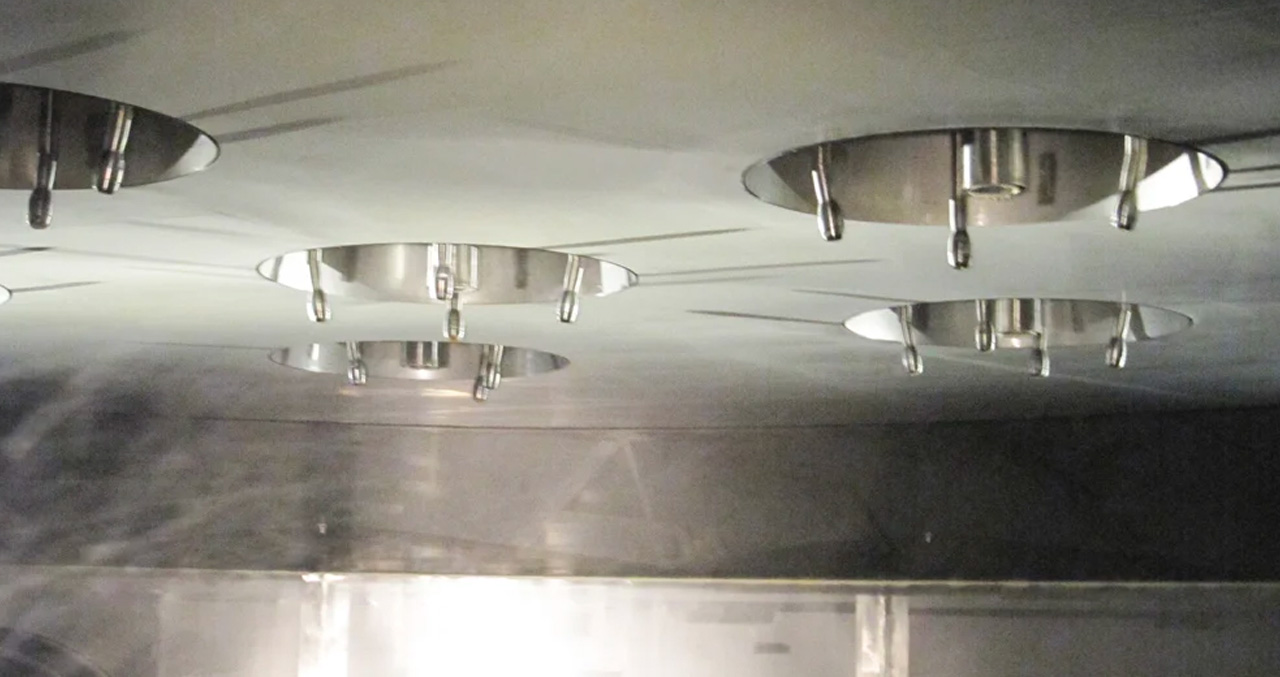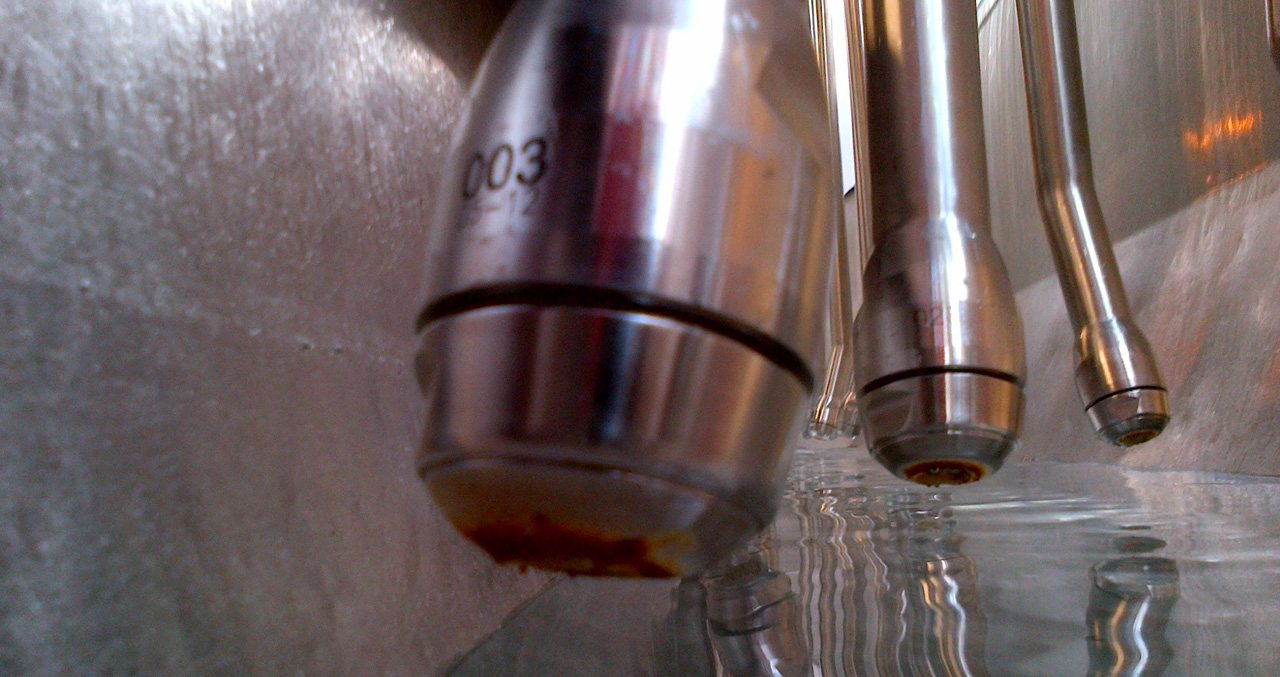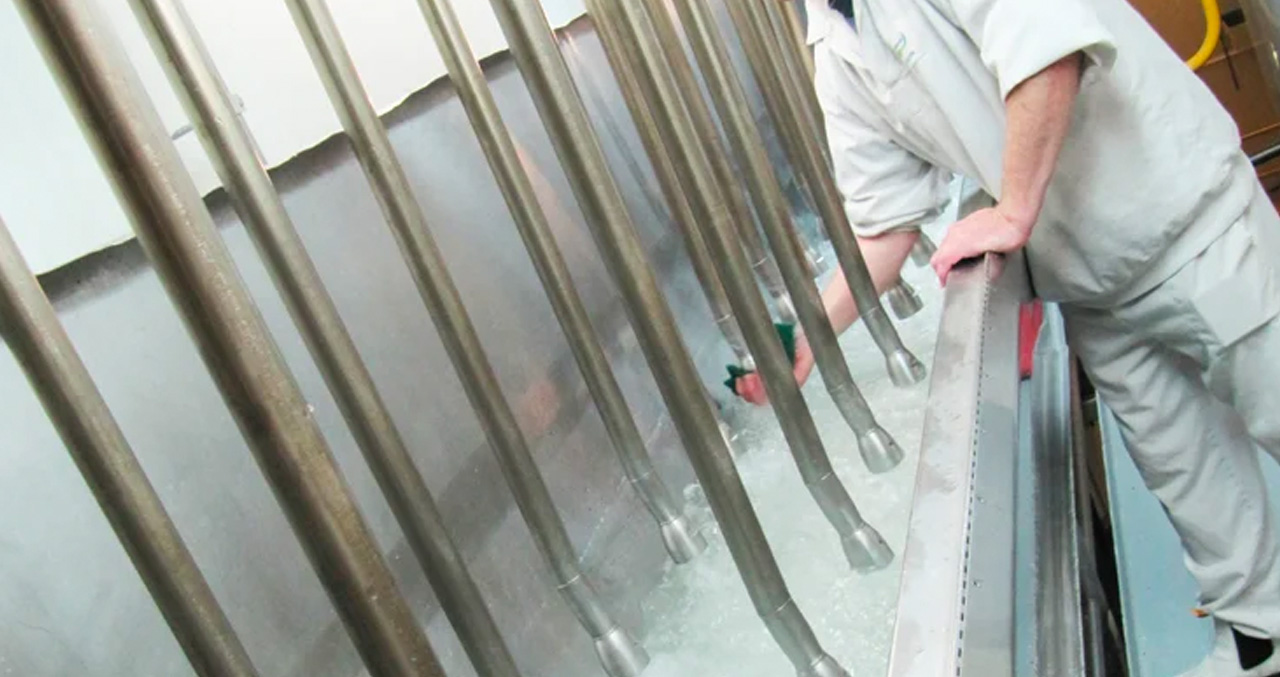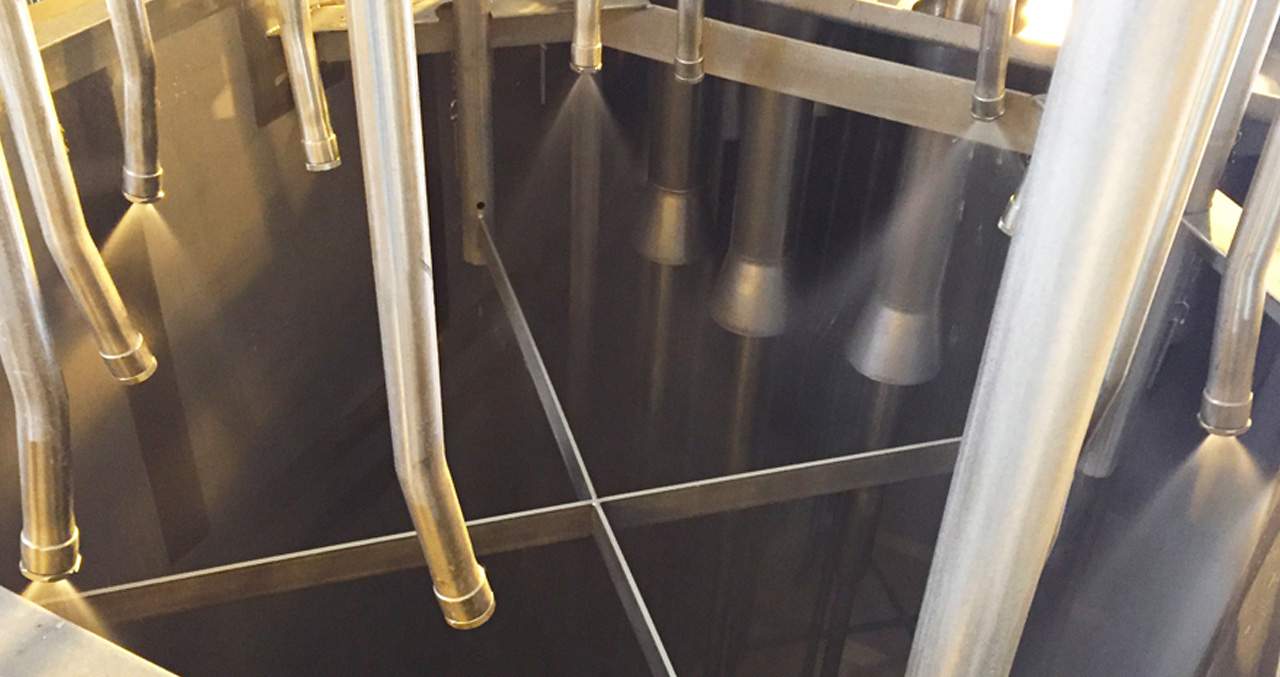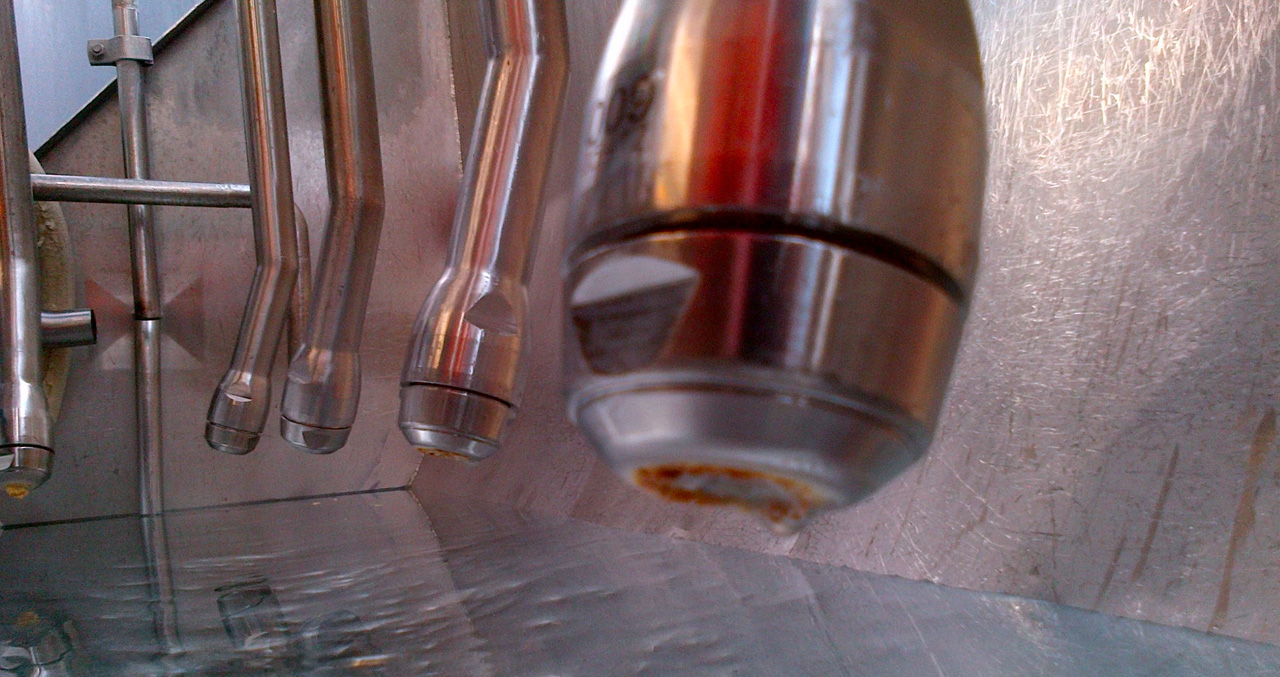Common Orifice Axial Compression Seals
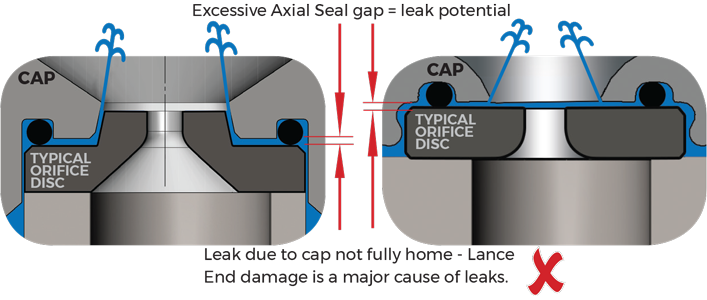
Click&Dry™ Gap Reduction Axial Seal
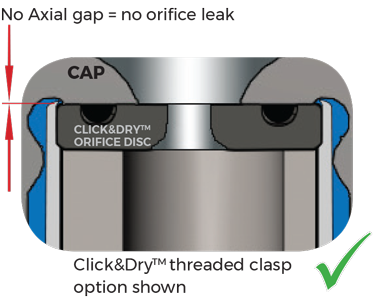
FACT: Almost all common spray dry nozzles in use have at least two primary seals, typically o-rings. Most older nozzle systems, as well as the axial orifice seal, would have a radial body seal normally rated for lower pressure operation if it does not use an industry standard backup ring to support it. The Click&Dry™ nozzle uses full axial sealing, this means that not just the orifice seal, but also the body seal, are both axial. This allows for the added benefit of high pressure sealing without the additional need for industry standard backup rings. Only Click&Dry™ offer full axial sealing with fit for purpose reliability. For more information please click here to download the spray dry “10 Facts”.
Fit for Purpose Nozzle Design
Topic: Correct Cap Installation & Managing Lance End Damage
Instaling Your Nozzles – First Things First – Understanding How Your Nozzles Seal Is Vital in Preventing Leaks:
The most reliable sealing method in a modern spray dry nozzle is an axial compression o-ring seal. Almost all spray dry nozzles in service use an axial o-ring seal at the orifice disc. This means that in order to seal and not leak at the orifice disc, adequate sealing requires the sealing faces to be close enough together in compression to prevent seal extrusion and leakage. To achieve this, the nozzle caps must be screwed fully home so they travel all the way down, applying the necessary axial compression between the seal face inside the nozzle cap and the orifice disc. This is easily and reliably achieved, particularly in very high-pressure applications, with options from the Click&Dry™ spray nozzle design.
What’s Next – Are Your Nozzles & Lance Ends Fit for Purpose?
Why is This Important to Combat Damage That Causes Leaks
Correct nozzle cap installation is a critically important aspect of spray dry nozzle used. It is equally important that the lance end & cap design you use takes into consideration, and can help accommodate, the typical lance handling conditions regularly encountered when using lances. This means a design that considers the typical daily use damage that will be present on most spray dry nozzle lance ends. This is what we call ‘fit for purpose’ nozzle design.
What is Spray Dry Nozzle Lance End Damage?
Spray dry nozzle lance end damage is a typical result of what can be regarded in the industry as typical use and handling of the spray dry lances under common handling conditions. Your lances are ‘high-pressure equipment’ that must function correctly and not leak at pressure; despite being subjected to some degree of typical handling damage. Fit for purpose lance end nozzle equipment designed with durability and functionality in mind will help keep you running trouble free where inferior equipment may not. The Click&Dry™ system was designed from the start with fit for purpose in mind.
How Does Lance End Damage Stop Nozzle Caps Screwing Home Which Can Cause Leaks?
The following images explain how lance end damage prevents proper nozzle cap installation and can lead to leaks.
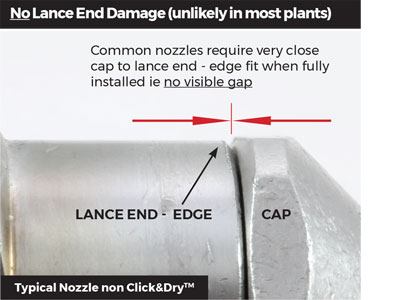
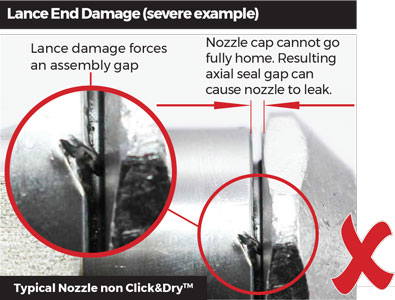
Other types of common lance end nozzle damage due to impact
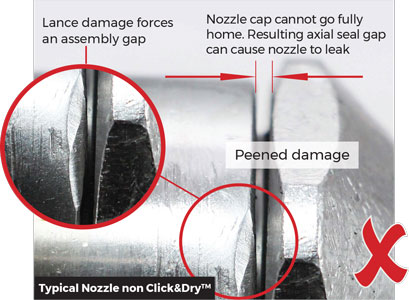
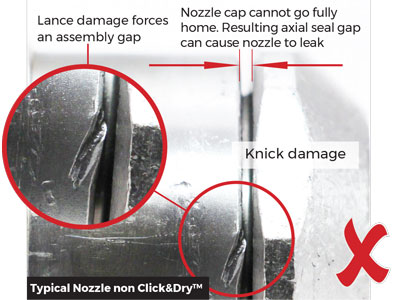
Managing Lance End Damage – Click&Dry™ Fit for Purpose Protection Step & Fit Check Groove
In the Click&Dry™ nozzle, built in is a special “protective mate step” which is a groove designed to provide clearance away from some of the typical lance end edge or cap damage occurring in normal use that may impede the cap from screwing home. This is achieved due to the clearance provided by the step, but what this also means is that by using our Mate Step gauge, we can provide an extra security check of the “protective step groove width” that should be seen at the body-cap interface when the cap is properly secured. This can be very easily measured with ‘Cap Fit Check Gauge’, “where if the gauge fits in the step, don’t run until you have the nozzles tight enough that the gauge will not fit inside the mate step groove.” Read on for the detailed explanation.
Click&Dry™ nozzles will function normally where some levels of lance end damage are present
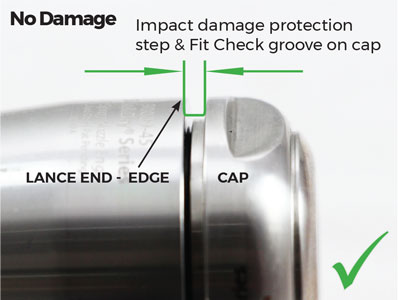
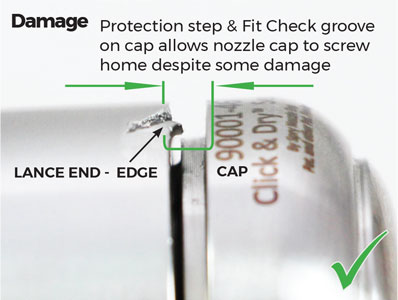
Regular Inspection of Your Lances and Nozzle Components is Vital
Lances and, in particular, lance ends, nozzle caps & all nozzle hardware should be inspected regularly by your qualified staff for damage that may be sources for leaks. Although all damages should always be scrutinized for correct sealing functionality, the commonly found lance end damages need not be as problematic when the lance nozzle body and nozzle cap are properly designed to weather some of the typical impact damage resulting from everyday use. The Click&Dry™ system is specifically designed to assist in reliable leak free & low thread damage service where other common systems can fail when some typical damage is encountered. If you are not sure, talk to one of our nozzle engineers who can help.
Tightening Your Nozzles – How Tight is Tight to Prevent Leaks?
Nozzle torque up & tightness is only part of what you need to know in managing your nozzle assembly to prevent leaks. Relying on torque alone can be misleading as lance end damage or thread damage can mean that despite a high torque, the nozzle cap is still prevented from screwing fully home and creating the face to face seal required at the orifice disc. The problem when relying on a torque check or requiring a torque setting is that if the damage is visually missed, a torque setting can still be achieved with the cap not screwed home, as the damage is preventing this. Looking to rely on torque settings alone to check installation and help to prevent leakage can be a risk. The Click&Dry™ system requires only to be nipped up firmly with a Click&Dry™ spanner using hand torque. This is sufficient to prevent leaks due to the full axial seal system. Click&Dry™’s nozzle is fit for purpose because of the important element of added leak protection. We call this “mate step protection & fit check groove” at the cap body mate surfaces. Full axial Click&Dry™ means all seals used have the benefit of full axial seal compression contact.
Use of correct tools during installation – Click&Dry™ hand spanner and multitool
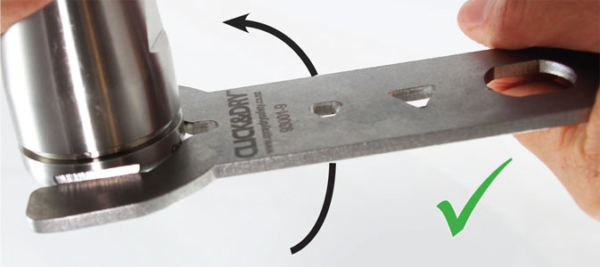
Installation Tip
Tightening your nozzle cap is as easy as nipping them up hand tight firmly using your Click&Dry™ or multitool once you have completed following the assembly SOP. Your final step will be to check for correct installation using your Click&Dry™ Fit Check gauge. See the next graphic.
Note: Always check for thread damage before use. Replace damage threads!
Click&Dry™ Protective Mate Step & Fit Check Groove -For Installation Check Gauge
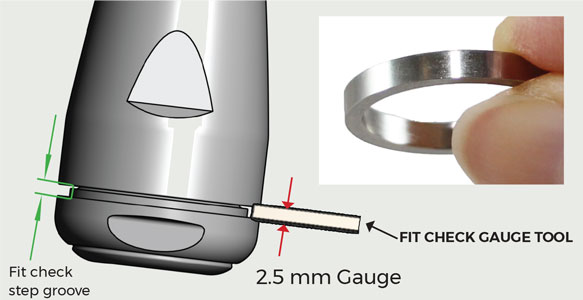
After tightening: Attempt to insert installation check gauge ring into the step groove as shown, rotating the gauge to ensure the flats are parallel to the step faces. If gauge fits into step, continue to tighten cap until it no longer fits, this indicates proper sealing contact. Please refer your relevant SOP for full Click&Dry™ installation details. Test the “fit gauge” at a few points about the diameter avoiding damage areas at the lance end.


